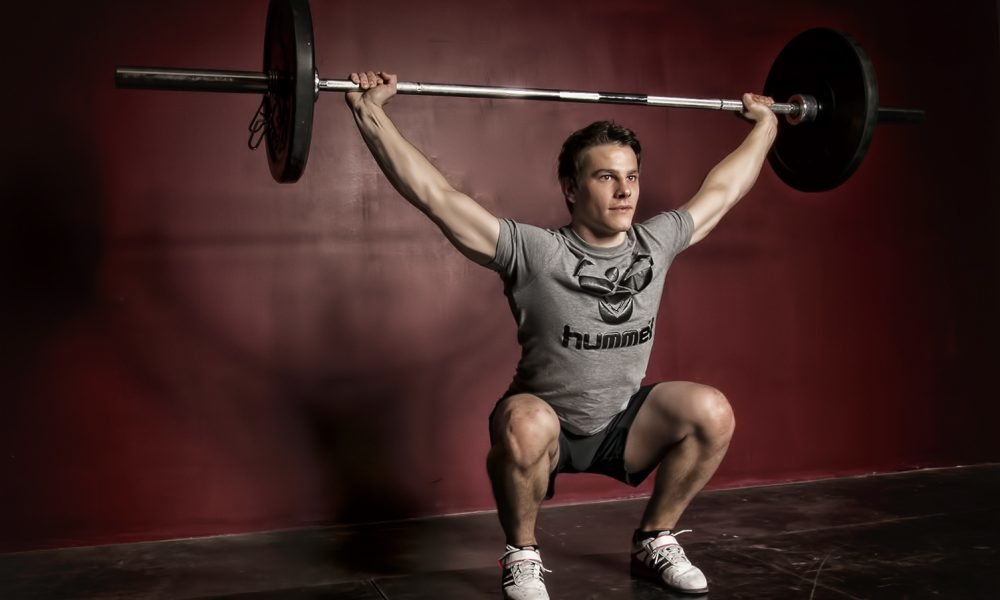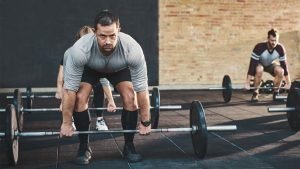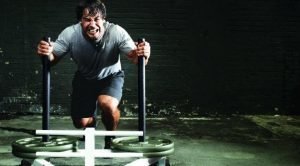
Training Crossfit and catalysis have become popular in recent years and undoubtedly strengthen most of the body’s muscles. Unfortunately, there are increasing signs that lifting weights these ways can cause back pain.
In recent years, the popularity of functional training has increased through Crossfit training, where a wide range of exercises are performed using equipment such as power balls, tires, ropes, kettlebells and more. These training methods are based on the biomechanical principle that in order to strengthen most of the muscles in the body you cannot train by isolating muscles, such as sitting on the power machines in the gym or lying down like in pilates. For example, in order to strengthen the muscles of the back and leg, exercises should be performed with rapid levels of weights or objects from floor to shoulder height or above the head.

It’s not surprising that in terms of impact on fitness and muscle strengthening, practicing these methods requires great effort – but this type of training is very effective. Studies comparing the degree of effort required in training Crossfit have found that functional training increases aerobic fitness no less than running. In addition, studies have shown that functional training strengthens most of the body’s muscles and causes a significant improvement in muscle strength and a shortening of muscle mass in the body. There are no disputes about the effectiveness of this type of training, but this is not the case when talking about their effects on back health. On the one hand, a study in Scandinavia found that training with kettlebells for eight weeks significantly reduced the rate of back pain among young people who worked strenuous physical jobs and suffered from pain in the back muscles. On the other hand, another study conducted by Krospeit practitioners at several gyms in the United States found that 20% of the trainers reported injuries in the first year of training, especially in the shoulder and lower back areas. This is a lower injury rate than running – but much higher than other strength training.

A study by Professor Stuart McGill of the University of Waterloo, Canada, one of the world’s leading biomechanics researchers, tried to answer whether these exercises are good for or harmful to the back. The study, published in the Journal of Strength and Conditioning, comprehensively examined the effect of functional training on the back muscles and the load on the vertebrae. The results of the study showed that performing sieves with kettlebells causes an increased contraction of many muscles in the body, especially the thigh muscles and buttocks and the stabilizing muscles of the back. The muscles not only shrunk with great force but also rapidly – a type of contraction that is difficult to obtain in other types of training. But when the loads were applied to the vertebrae, it was found that compared with other exercises, such as exercises to strengthen the back muscles that are performed against resistance with hand or rod weights like squats, the load on the spinal cord (the vertebrae, the joints of the back and especially the intervertebral disc) is much higher.
There is immense pressure on the back caused by strong twisting of vertebrae – especially on the vertebral disc in the spine – and lower back vertebrae have high torsion forces, especially at the beginning of the lift when the back is bent downward. In this state of deep flexion, the back muscles contract tightly and the back is stiff. This causes great mechanical pressure to be exerted on the back of the lower back. The pressure causes an increase in the torsional forces, which cause the lower back vertebrae to move in opposite directions.
This pressure creates a mechanical load and increased erosion of the discs in the spine and may cause back pain among some exercises, especially those with a history of back pain, a family history of disc herniation, or back instability. It is important to note that the increased load on the back vertebrae does not stem from poor training technique since the study was conducted among professional trainees. The increased load in these exercises, in contrast to exercises performed at the gym, is due to the fact that in the functional exercises, the starting point of the swing requires increased bending of the back and thigh joints. The second reason is that the weights in these exercises are higher than the body. In the exercises where the weights are carried out, the load measured in the vertebral vertebrae is significantly lower than the load that can cause back pain.

To conclude, there is no doubt that functional training is effective in strengthening the muscles of the body. However, since the training includes shifting of various weights, which causes mechanical load on the lower back, it is suitable mainly for young exercisers with ideal physical fitness and no history of back pain. For trainees (even experienced ones) who have a history of back pain or who aren’t in great physical shape, this type of training isn’t recommended.
Source: Read Full Article






